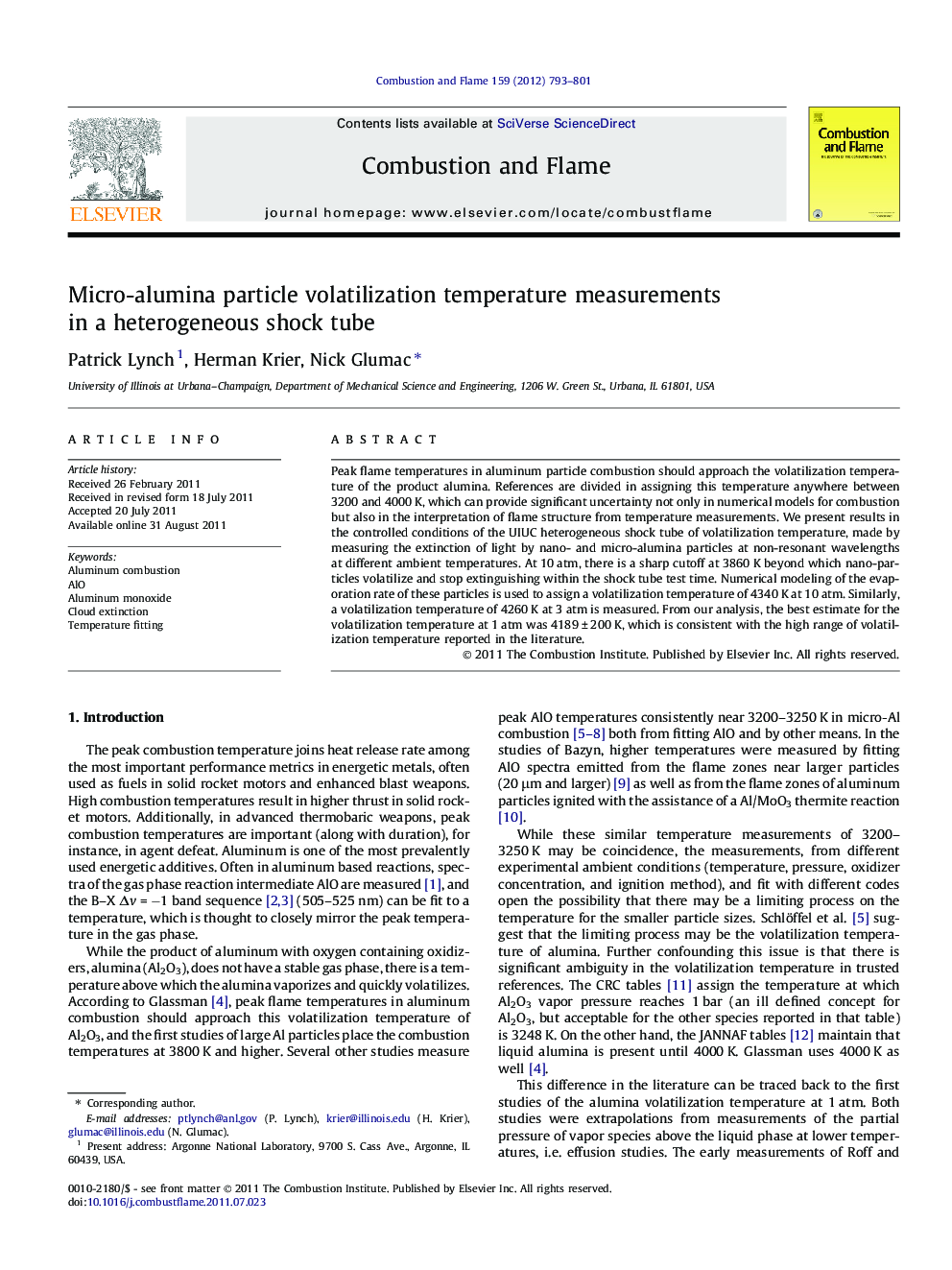| Article ID | Journal | Published Year | Pages | File Type |
|---|---|---|---|---|
| 167280 | Combustion and Flame | 2012 | 9 Pages |
Peak flame temperatures in aluminum particle combustion should approach the volatilization temperature of the product alumina. References are divided in assigning this temperature anywhere between 3200 and 4000 K, which can provide significant uncertainty not only in numerical models for combustion but also in the interpretation of flame structure from temperature measurements. We present results in the controlled conditions of the UIUC heterogeneous shock tube of volatilization temperature, made by measuring the extinction of light by nano- and micro-alumina particles at non-resonant wavelengths at different ambient temperatures. At 10 atm, there is a sharp cutoff at 3860 K beyond which nano-particles volatilize and stop extinguishing within the shock tube test time. Numerical modeling of the evaporation rate of these particles is used to assign a volatilization temperature of 4340 K at 10 atm. Similarly, a volatilization temperature of 4260 K at 3 atm is measured. From our analysis, the best estimate for the volatilization temperature at 1 atm was 4189 ± 200 K, which is consistent with the high range of volatilization temperature reported in the literature.
